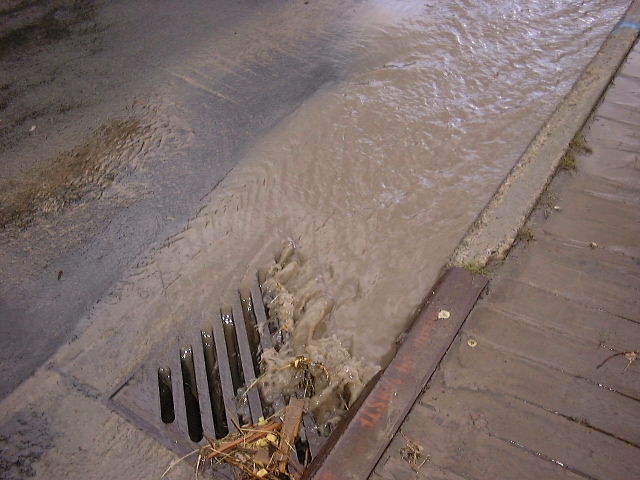When buildings, parking lots, roads and other impervious surfaces are added to the landscape, the ground does not absorb the water. Water from rain or snow storms, known as stormwater, instead flows over streets, parking lots and roofs picking up contaminants and eventually flowing into a storm drain or waterbody. Stormwater runoff is the number one cause of stream impairment in urbanized areas (Flat Creek in the Town of Jackson is one example).
Stormwater Pollutants & Sources
Stormwater runoff can come from multiple sources and carry a range of pollutants
Sediment – Construction sites, streambank erosion and disturbed areas
Nutrients – Fertilized landscaping, leaky sewers and septic tanks, livestock and pets, eroding soils
Bacteria – Pet waste, wildlife, livestock, leaky sewers and septic tanks
Trace Metals – Automobile wear and tear, exhaust
Road Salt – Applications to snow and ice
Traction Sand – Applications to snow and ice
Toxic & Synthetic Chemicals – Herbicides and pesticides, illegal dumping, accidental spills, automobiles
Thermal Impacts – Heated impervious surfaces, riparian vegetation removal, shallow ponds
Cumulative Effects of Stormwater Runoff
Negative Impact to Fisheries and Aquatic Life
Increases Flooding – Increased volumes and rates of stormwater runoff can lead to more frequent and severe flooding eroded stream banks
Widenes Channels – Sediment filled waterways, loss of property
Impairs Recreational Uses – Less opportunities for swimming, fishing, rafting
Threatens Public Health – E. coli bacteria, contamination of drinking water, exposure to pollutants
Damages Aesthetics – Dirty water, nuisance algae, foul odors
Decreases Economic Potential – Fisheries, recreation, tourism
